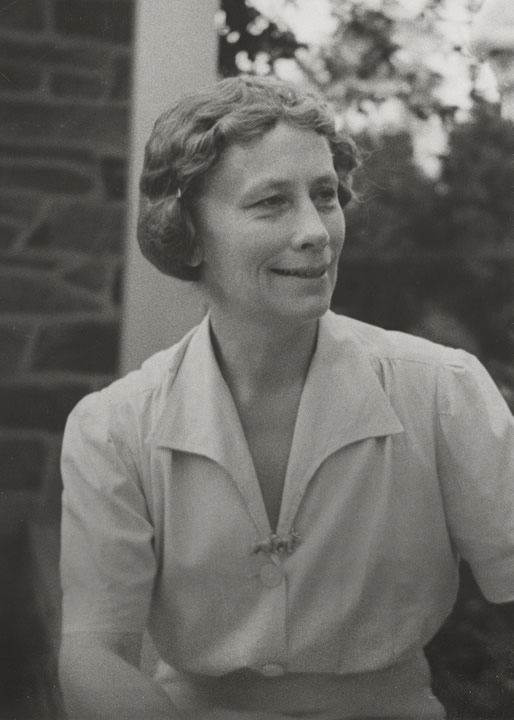Daisy Suckley & FDR: A Close Bond Explored - Learn More
Could a single life, intertwined with a President's, hold the keys to understanding a hidden chapter of American history? Margaret "Daisy" Suckley, a name whispered in the corridors of power, was far more than just a distant cousin to Franklin D. Roosevelt; she was a confidante, a companion, and perhaps, something more.
Born in Rhinebeck, New York, in 1891, Daisy's life was intrinsically linked to the Roosevelt family. Raised at Wilderstein, she shared a childhood with FDR, her neighbor and sixth cousin. Her world was one of the Hudson Valley, a landscape that shaped both their lives and the course of history. She attended Bryn Mawr College for a brief period, from 1912 to 1914, before her studies were curtailed at her mother's behest. It was a decision that would alter the path of a woman destined to play a significant, though often understated, role in the life of one of America's most consequential presidents.
| Full Name | Margaret "Daisy" Suckley |
| Born | Rhinebeck, New York, 1891 |
| Died | Wilderstein, Rhinebeck, New York |
| Relationship to FDR | Sixth Cousin and Confidante |
| Education | Bryn Mawr College (attended 1912-1914) |
| Notable for | Friendship and confidante of Franklin D. Roosevelt, archivist at the FDR Presidential Library, gave FDR his dog Fala. |
| Residence | Wilderstein, Rhinebeck, NY |
| Key Interactions |
|
| Legacy | Preserved the legacy of FDR, provided insight into his personal life. |
| Reference | Franklin D. Roosevelt Presidential Library and Museum |
Her connection with FDR was not merely familial. Daisy was a constant presence throughout his life, a trusted friend who shared the burdens and triumphs of his presidency. Extraordinary letters, penned during the Roosevelt years, document the warm friendship between them, a bond that transcended the formalities of public life. They shared a heritage rooted in the Hudson Valley, a connection that solidified their bond and offered solace amidst the pressures of the White House.
The story of their relationship, however, is not without its shadows. "Hyde Park on Hudson" offered a dramatized, fictionalized account, but the true nature of their bond remains a subject of historical debate. Historians have explored the complexities of their relationship, placing Daisy within Roosevelt's intimate circle. She was with him in Warm Springs, Georgia, when he died in April 1945, a poignant moment that solidified her place in history.
Daisy was no stranger to the inner workings of the Roosevelt administration. She was also one of the first archivists at the Franklin D. Roosevelt Presidential Library & Museum, dedicating herself to preserving his legacy. It was a task that reflected her deep respect for the man and the president.
Beyond the historical record, there were whispers. Rumors of a love affair circulated during their time together. These rumors gained traction over time, fueled by their close companionship and the affectionate nature of their interactions. Daisy, according to some accounts, was aware of other women in FDR's life, including Lucy Mercer Rutherfurd, who was present when he died. This knowledge potentially shaped her understanding of the complexities of Roosevelts personal life.
Daisy's presence at FDR's deathbed underscores the unique nature of their relationship. When Eleanor Roosevelt arrived from Washington, she turned to Daisy for answers. Daisys account, according to some sources, included the presence of Lucy Mercer Rutherfurd, and the details about their clandestine meetings. This candidness reveals a level of trust and intimacy that few others shared.
Daisy was also a keen observer, a chronicler of the everyday life that surrounded the President. Her handwritten notes, preserved and cataloged at the library, provide a glimpse into the details of FDR's world. Notes with reminders to attend rallies, a list of names of attendees, they bring to life the personal touches that often go unseen in historical accounts. She was present at important historical events, yet her contributions extended far beyond the public spotlight. She offered more than friendship; she offered a different kind of support and understanding.
The Suckley family's roots in the Hudson Valley ran deep, their legacy bound to the history of the region. Daisy was the last resident of Wilderstein, the family home. The house, filled with memories of a life lived amidst both privilege and hardship, served as a constant reminder of her origins.
The impact of the Great Depression was felt across the country, including in the Suckley family, leading to a loss of the family's fortune. Though she may not have been a woman of material wealth, Daisy's value was measured in the connections she forged, the memories she preserved, and the love she held for Franklin D. Roosevelt.
Daisys contribution to FDRs life wasnt solely as a confidante; she played a role in introducing him to his famous dog, Fala, a Scottish Terrier. She traveled extensively with FDR during his presidency, further solidifying her place within his inner circle.


